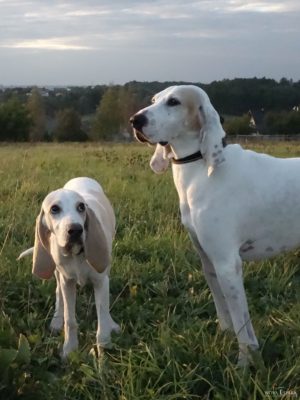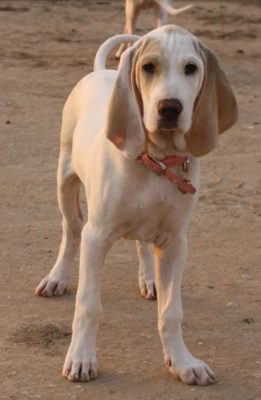Porcelaine
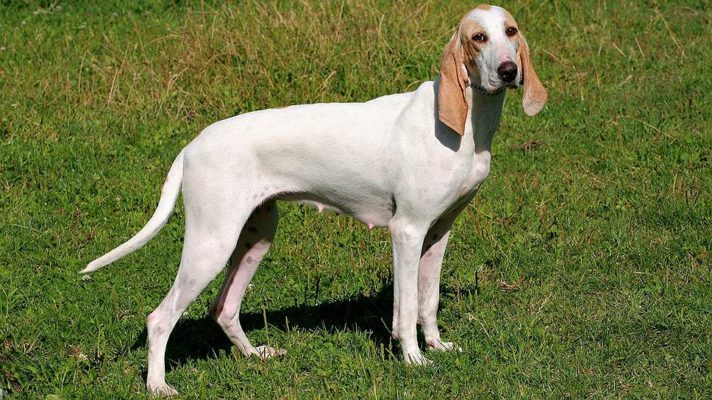
The Porcelaine combines the traits of a loyal, kind, and affectionate friend with tenacity and excitement while hunting. This dog will feel great in a large family where everyone gives it the attention it deserves. The Porcelaine treats children in a special reverent way, always allowing itself to be overly active. Particular attention should be paid to the education of the Porcelaine from childhood.
Table of Contents
Breed Information
| Another Name | Briquets Francs Comtois |
| Origin | France |
| Height | Males 55-58 cm Females 53-56 cm |
| Weight | 25-28 kg |
| Fur | Short, close-fitting to the body |
| Color | White with orange spots or mottles on it |
| Lifespan | 12-14 years |
| FCI Classification | Scent hounds and related breeds |
| Group | Hunting dogs |
| Price | $800 |
Breed Photos
Origin History
The Porcelaine Hound, Porcelaine or Royal Hound, has a unique history and fully lives up to its breed name. This skillful hunter and wonderful pet could disappear, but skilled dog breeders and fans have made an effort to preserve it. She has become a favorite of royalty.
The breed was bred in the French abbeys of Luxel and Cluny as early as the fifteenth century. Thanks to competent breeding, it received decent hunting habits. But this did not happen immediately. First, breeders consolidated the exterior of the breed and only then set about improving its qualities. In those days, white-colored dogs were generally considered marriage, but these beauties won their popularity among hunters. The hound began to shine when hunting hare or roe deer. The presence of a PorcelaineHound in the pack immediately showed the owner’s wealth.
The English Foxhound and Beye owe their unusual appearance to the Porcelaine. Nowadays, the breed is mainly found only in France, Italy, and Switzerland. This breed is not often seen on the street, but it certainly attracts a lot of attention.
Appearance
One of the breed’s names, the Porcelaine, has a direct relation to the appearance of the dog. It translates as “porcelain,” and indeed, the dog does look like a porcelain figurine. Its white, smooth coat with a glossy sheen and graceful build immediately hints at its aristocratic origins. The head is elongated, the transition to the forehead is smooth. Teeth are powerful and strong, scissor-shaped bites. The eyes are large and expressive. The body is elongated; thanks to the balance of the chest volume and the body’s length, the dog is safe from oxygen starvation. The limbs are straight and long. The thighs have a dry musculature. The tail is thick and strong.
Character
The Porcelaine combines the traits of a loyal, kind, and affectionate friend with tenacity and excitement while hunting. This dog will feel great in a large family where everyone gives it the attention it deserves.
The Porcelaine treats children in a special reverent way, always allowing itself to be overly active. Particular attention should be paid to the education of the Porcelaine from childhood. The fact is that until the puppy learns the basic rules, he may become a real monster and destroy half of your home. At this age, he is interested in exploring everything, so it is better to spend as much time outside under supervision.
The pet must learn to control its excitement and interest in animals in the street and turn it on only when hunting. Otherwise, the hound can stop obeying the owner and run after a stray cat.
Because of its great affection for people, the Porcelaine is not suitable as a guard dog. However, his sonorous barking is a great advantage and will easily scare away passers-by.
Porcelaine Hound originally has only one main purpose – hunting. Indeed, the Porcelaine perfectly tracks the prey and has an excellent sense of smell. This breed works well in a team; you need to teach it to interact properly with congeners. The hardy hound usually stalks deer, roe deer, and even wild boar. Even during bad weather conditions or on difficult terrain, the dog will feel confident. The future hound owner needs to understand that if his dog is not going to deal with hunting, this activity’s absence should be compensated by a lot of physical exertion.
Care
Porcelaine has a unique coat that repels dirt. Therefore, it is simply not necessary to bathe the dog often. Of course, after hunting or an active walk, it is necessary to inspect the pet’s skin for the presence of parasites. It is desirable to clean the ears often; they are prone to inflammation in the Porcelaine Hound. Claws should be trimmed as needed. Oral hygiene should be maintained regularly.
Training
In raising a hound, the first thing is to show the dog that the master is in charge. Of course, this should not be done through force and harm. For every correctly performed action, you should reward the pet with something tasty. Porcelaine has an independent character and does not always obey. Only through monotonous training and patience is it possible to achieve the desired result. In general, by one year, the dog should master the basic commands and behave without aggression to others.
Common Diseases
It is important to pay attention to your dog’s ears. It is a vulnerable place; dirt accumulation can lead to inflammation and infection. A vet checkup should be done once a year. Parasite vaccinations should be done regularly since the dog spends a lot of time outdoors.
Porcelaine is prone to such diseases:
- deafness;
- predisposition to the joint disease;
- dog typhus;
- hyperemia.
Nutrition
The diet of the Porcelaine Hound should consist of a variety of foods. Of course, after great physical exertion, the portion should increase. It is not necessary to overfeed the dog. Daily, lean types of meat, chicken necks are suitable. Small amounts of dairy products may be given. Protein can be diluted with liquid porridge, soups, bran, and vegetables. No sweets should be given to Porcelaine. There should always be fresh water in the bowl.
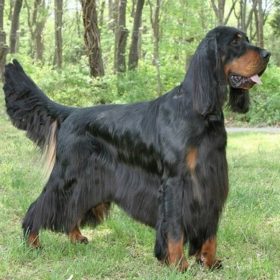 Gordon Setter
Gordon Setter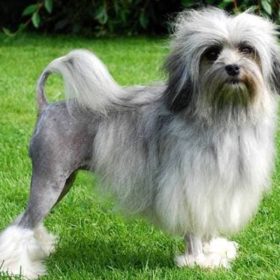 Löwchen
Löwchen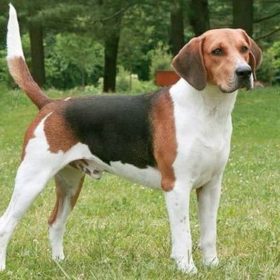 Beagle-Harrier
Beagle-Harrier Petit Basset Griffon Vendéen
Petit Basset Griffon Vendéen Berger Picard
Berger Picard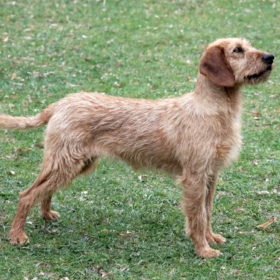 Styrian Coarse-haired Hound
Styrian Coarse-haired Hound